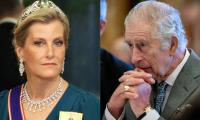LAHORE: There is significant potential to expand the textile market and triple or quadruple Pakistan’s exports. The country’s share in the global textiles market has remained almost stagnant over the past 13 years, while Bangladesh, India, and Vietnam have seen continuous growth.
The greatest challenge for the textile sector is addressing the structural imbalances it faces. For instance, Pakistan uses cotton in 70 per cent of its textile products, while only 30 per cent of man-made fibres are blended with cotton. In contrast, the global average is 75 per cent man-made fibres blended with 25 per cent cotton.
Consequently, Pakistan caters to a smaller portion of the global textile and clothing market. Competing economies in the region facing the same issue have increased their use of human-made fibres.
In recent years, Pakistan has faced competition from regional players such as Bangladesh, India, and Vietnam. Its share in the global textile market decreased from 3.4 per cent to 3.1 per cent in the last three years.
Pakistan’s market share in the global textile and clothing (T&C) market did not increase in line with the rapid growth seen in India, Bangladesh, Vietnam, and Cambodia over the years 2000, 2010, 2020, and 2023. This includes both the textile and clothing (garments) sectors, based on available trade data from the World Trade Organization (WTO), the International Trade Centre (ITC), and various national statistical agencies.
In 2000, Pakistan commanded 2.2 per cent of the global T&C market, which increased to 3.3 per cent in 2010 and 3.4 per cent in 2020, but declined to 3.1 per cent in 2023.
It is a significant player in textiles, especially cotton fabrics, but less competitive in clothing manufacturing compared to countries like Bangladesh and Vietnam.
India has maintained a strong position in the global T&C market, especially in textiles. India is one of the largest producers of cotton and has a substantial presence in home textiles. Its clothing export share has grown steadily but at a slower pace compared to Bangladesh and Vietnam. In 2000, India’s share in the global T&C market was 3.0 per cent, increasing to 4.5 per cent in 2010, 4.6 per cent in 2020, and then declining to 4.2 per cent in 2023.
Bangladesh primarily focuses on clothing exports. Its share in the global T&C market was 2.5 per cent in 2000, 4.6 per cent in 2010, 6.8 per cent in 2020, and 7.5 per cent in 2023. Bangladesh has seen significant growth in its clothing sector, becoming one of the top global garment exporters. This growth has been driven by competitive labour costs and robust trade agreements, particularly with the EU and the US.
Vietnam has rapidly increased its market share, benefiting from trade agreements like the Comprehensive and Progressive Agreement for Trans-Pacific Partnership (CPTPP) and favourable labour conditions. It has emerged
as a major competitor in the global clothing market. Its share in the global T&C market was a nominal 0.9 per cent in 2000, increasing to 3.6 per cent in 2010, 6.4 per cent in 2020, and 6.7 per cent in 2023.
Bangladesh and Vietnam have seen the most significant rise in market share, particularly in the clothing segment, largely due to their focus on apparel and advantageous trade agreements.
India and Pakistan have remained major textile exporters, but their growth has been more modest compared to Vietnam and Bangladesh. The exact market share values can fluctuate year to year based on changes in trade agreements, economic conditions, and global demand, but these figures provide a general trajectory over the past two decades.
An image from the MoU signing ceremony between Zindagi and PostEx.— LinkedIn@zindigi/File KARACHI: Zindigi, in...
The representational image shows a person holding gold necklaces. — AFP/FileKARACHI: Gold prices decreased by...
Pakistan and China flags can be seen in this image. — Xinhua/FileKARACHI: A high-level delegation from Pakistan’s...
Makoto Uchida, president and CEO of Nissan Motor, and Toshihiro Mibe, Honda Motor president and CEO, attend their...
In this image, a man can be seen working in a textile factory in Pakistan. — AFP/FileLAHORE: The slow growth in...
Fishmonger Yasushi Miyamoto, 70, prepares local delicacy, bonito seared over a hay fire, in Ino, Kochi Prefecture,...







